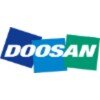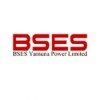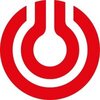Filter interviews by
Shirdi Sai Electricals Production Engineer Interview Questions, Process, and Tips
Shirdi Sai Electricals Production Engineer Interview Experiences
1 interview found
I applied via Walk-in and was interviewed before Oct 2023. There were 3 interview rounds.
20 Questions asked on Aptitude and Reasoning
(5 Questions)
- Q1. Tell me about yourself
- Q2. Family Background
- Q3. Can u work in shift timings
- Q4. Can u give bond for 3 year's
- Q5. Can you keep original certificates with us until 5 years
- Ans.
Yes, original certificates can be kept with the company for up to 5 years.
Original certificates can be securely stored by the company for record-keeping purposes.
It is common practice for companies to retain original certificates of employees for a certain period of time.
Having original certificates on file can be useful for verification purposes or in case of audits.
Employees should ensure that copies of their certifi...
(5 Questions)
- Q1. Difference between batch and mass production?
- Ans.
Batch production involves producing a specific quantity of items at a time, while mass production involves continuous production of large quantities.
Batch production is more flexible and allows for customization of products.
Mass production is more efficient and cost-effective for producing large quantities.
Batch production is common in industries like pharmaceuticals, bakeries, and breweries.
Mass production is common i...
- Q2. How many subjects in ur btech college
- Ans.
I had 8 subjects in my btech college.
I had subjects like Mechanical Engineering, Electrical Engineering, Computer Science, etc.
Each semester had different subjects based on the curriculum.
Some common subjects included Thermodynamics, Control Systems, Data Structures, etc.
- Q3. Density of Cu, Al, Mild steel, Stainless steel
- Ans.
Density of Cu, Al, Mild steel, Stainless steel
Density of Copper (Cu) is approximately 8.96 g/cm^3
Density of Aluminum (Al) is approximately 2.70 g/cm^3
Density of Mild Steel is approximately 7.85 g/cm^3
Density of Stainless Steel can vary depending on the grade, but is typically around 7.9 g/cm^3
- Q4. Calculate weight of 1mX1mx3mm MS plate?
- Ans.
The weight of a 1mX1mX3mm MS plate can be calculated using the formula: Weight = Length(m) x Width(m) x Thickness(mm) x Density of MS (kg/m^3)
Convert the thickness from mm to m (3mm = 0.003m)
Density of MS is typically around 7850 kg/m^3
Calculate the weight using the formula: Weight = 1m x 1m x 0.003m x 7850 kg/m^3
- Q5. Area of Rectangle, square, ellipse, circle, hexagon
- Ans.
The area of a rectangle is length multiplied by width, square is side squared, ellipse is pi times major axis times minor axis, circle is pi times radius squared, and hexagon is 1.5 times apothem times perimeter.
Rectangle: Area = length x width
Square: Area = side x side
Ellipse: Area = pi x major axis x minor axis
Circle: Area = pi x radius x radius
Hexagon: Area = 1.5 x apothem x perimeter
Interview Preparation Tips
- Metallurgy
- Sheet Metal
- Mechanical Engineering
- Machine Drawing
Top trending discussions






Interview questions from similar companies

I appeared for an interview in Feb 2025, where I was asked the following questions.
- Q1. What is HAZ
- Ans.
HAZ stands for Heat-Affected Zone, an area in materials affected by welding or heat treatment.
The HAZ is the region surrounding a weld that experiences changes in microstructure due to heat.
Properties like hardness and ductility can vary significantly in the HAZ compared to the base material.
For example, in steel welding, the HAZ may become brittle if not properly managed.
Understanding HAZ is crucial for ensuring the i
- Q2. Knowledge about welding technology

Production Engineer Interview Questions & Answers
Dhoot Transmissionposted on 26 Jul 2022

(1 Question)
- Q1. Line Balancing, 4M change Management
Interview Preparation Tips

(1 Question)
- Q1. Tell about job roles
Interview Preparation Tips

I applied via Naukri.com and was interviewed before May 2023. There were 3 interview rounds.
(12 Questions)
- Q1. What are the lifecycle methods?
- Ans.
Lifecycle methods are methods that are automatically called at certain points in the lifecycle of a component in React.
Lifecycle methods include componentDidMount, componentDidUpdate, componentWillUnmount, etc.
These methods allow developers to perform actions at specific points in a component's lifecycle, such as fetching data after the component has been rendered.
They are used to manage side effects, perform cleanup, ...
- Q2. What are the advantages and features of react?
- Ans.
React is a popular JavaScript library for building user interfaces.
Component-based architecture for reusability and easy maintenance
Virtual DOM for efficient updates and performance optimization
JSX syntax for writing HTML within JavaScript
One-way data binding for predictable data flow
Support for server-side rendering for improved SEO
Large community and ecosystem with many third-party libraries and tools
- Q3. Difference between class and functional components?
- Ans.
Class components are ES6 classes that extend from React.Component and have state and lifecycle methods, while functional components are simple functions that take props as input and return JSX.
Class components are defined using ES6 classes and have a render method.
Functional components are defined as simple functions that take props as input and return JSX.
Class components can have state and lifecycle methods like comp...
- Q4. What are the Higher order components?
- Ans.
Higher order components are functions that take a component and return a new component with additional functionality.
Higher order components enhance the functionality of existing components
They can be used for code reusability and separation of concerns
Examples include withRouter from React Router and connect from React Redux
- Q5. What are the React hooks?
- Ans.
React hooks are functions that let you use state and other React features without writing a class.
React hooks were introduced in React 16.8.
They allow you to use state and other React features in functional components.
Some commonly used hooks are useState, useEffect, useContext, and useReducer.
Hooks are more flexible and easier to use compared to class components.
- Q6. What is the difference between contextAPI and Redux?
- Ans.
ContextAPI is a built-in feature in React for managing global state, while Redux is a separate library for state management in React applications.
ContextAPI is built into React, while Redux is a separate library.
ContextAPI is primarily used for managing global state in a React application.
Redux provides a centralized store for state management and follows a unidirectional data flow.
ContextAPI is simpler to use for smal...
- Q7. What are the semantic elements in html?
- Ans.
Semantic elements in HTML are tags that clearly define the content they wrap, providing meaning to both browsers and developers.
Semantic elements help improve SEO by providing search engines with better understanding of the content.
Examples of semantic elements include <header>, <footer>, <article>, <section>, <nav>, <aside>, <main>, <figure>, <figcaption>, <deta...
- Q8. What are the pseudo elements?
- Ans.
Pseudo elements are used in CSS to style specific parts of an element.
Pseudo elements are denoted by double colons (::) in CSS.
They allow styling of specific parts of an element, like the first letter or line.
Common pseudo elements include ::before, ::after, ::first-line, and ::first-letter.
- Q9. What is box model?
- Ans.
The box model is a fundamental concept in CSS that defines the layout of elements on a webpage.
The box model consists of content, padding, border, and margin.
Content: the actual content of the element, such as text or images.
Padding: space between the content and the border.
Border: a line that goes around the padding and content.
Margin: space outside the border, separating the element from other elements.
- Q10. What is hoisting?
- Ans.
Hoisting is a JavaScript mechanism where variable and function declarations are moved to the top of their containing scope during the compilation phase.
Variable and function declarations are hoisted to the top of their scope.
Only declarations are hoisted, not initializations.
Function declarations take precedence over variable declarations.
Example: console.log(myVar); var myVar = 10; // Output: undefined
Example: cons...
- Q11. What is difference between normal function and arrow function?
- Ans.
Normal functions are defined using the function keyword, while arrow functions are defined using the => syntax.
Normal functions are hoisted, while arrow functions are not hoisted.
Arrow functions do not have their own 'this' keyword, they inherit it from the parent scope.
Arrow functions do not have their own 'arguments' object.
Arrow functions are more concise and have implicit return.
Arrow functions cannot be used as co
- Q12. What is splice and slice?
- Ans.
Splice and slice are methods used in programming to manipulate arrays.
Splice is used to add or remove elements from an array at a specific index.
Slice is used to extract a portion of an array and returns a new array.
Example of splice: array.splice(2, 0, 'new element') - adds 'new element' at index 2.
Example of slice: array.slice(1, 4) - extracts elements from index 1 to 3.
Coding questions on Java script like array methods and objects handling. coding questions on React is like life cycle methods using functional components and state management.
(2 Questions)
- Q1. Why should we hire you?
- Q2. How do you handle the work?
Skills evaluated in this interview

I appeared for an interview before Mar 2024, where I was asked the following questions.
- Q1. Why do you want to work here
- Q2. What are your future plans

Interview Questionnaire
4 Questions
- Q1. What is 7qc tool, why we use it ?
- Ans.
7QC tools are a set of quality control tools used to identify and solve quality problems in manufacturing processes.
7QC tools include Pareto chart, cause-and-effect diagram, control chart, histogram, scatter diagram, flowchart, and check sheet.
They help in identifying and analyzing quality problems, determining root causes, and implementing corrective actions.
They are used to improve product quality, reduce defects, an...
- Q2. What ia PPAP and APQP?
- Ans.
PPAP and APQP are quality management systems used in manufacturing.
PPAP stands for Production Part Approval Process and is used to ensure that manufactured parts meet customer requirements.
APQP stands for Advanced Product Quality Planning and is used to plan and manage the design and development of new products.
Both systems are commonly used in the automotive industry but can be applied to other manufacturing industrie...
- Q3. What is pareto?
- Ans.
Pareto is a principle that states 80% of effects come from 20% of causes.
Also known as the 80/20 rule
Used in business to identify the most important factors
Can be applied to various fields such as economics, engineering, and social sciences
Example: 80% of a company's profits come from 20% of its customers
- Q4. How to calculate the OEE?
- Ans.
OEE can be calculated by multiplying Availability, Performance, and Quality percentages.
Calculate Availability by dividing Operating Time by Planned Production Time.
Calculate Performance by dividing Actual Production by Maximum Production.
Calculate Quality by dividing Good Units by Total Units Produced.
Multiply Availability, Performance, and Quality percentages to get OEE.

Interview Questionnaire
2 Questions
- Q1. Tell about yourself, about your previous work experience, technical details of wtg, about the cranes used in project.
- Q2. What is difference between tensioning and torquing ?
- Ans.
Tensioning is the process of applying tension to a fastener or material, while torquing is the process of applying torque or rotational force.
Tensioning involves stretching or pulling a material to create tension, while torquing involves applying rotational force to tighten or loosen a fastener.
Tensioning is commonly used in applications such as tightening cables, belts, or chains, while torquing is used in fastening b...
Interview Preparation Tips
Experience: On my experience in wind sector.

Executive Engineer Interview Questions & Answers
Doosan Power Systemsposted on 10 Feb 2022
I applied via Naukri.com and was interviewed before Feb 2021. There was 1 interview round.
(1 Question)
- Q1. Concrete, BBS and Shuttering.
Interview Preparation Tips

I applied via Recruitment Consultant and was interviewed before Oct 2020. There were 5 interview rounds.
Interview Questionnaire
2 Questions
- Q1. I did degree in electrical,but didn't get my promotion as per the rule,and didn't get pension as per my salary,which is terrible for me and my family.
- Ans. I want to extend my job here
- Q2. I am enthusiastic ly keen for job after retirement
Interview Preparation Tips
Shirdi Sai Electricals Interview FAQs
Tell us how to improve this page.
Shirdi Sai Electricals Interviews By Designations
- Shirdi Sai Electricals Senior Engineer Interview Questions
- Shirdi Sai Electricals Planning Engineer Interview Questions
- Shirdi Sai Electricals Electrical GET Interview Questions
- Shirdi Sai Electricals Maintenance Engineer Interview Questions
- Shirdi Sai Electricals R&D Manager Interview Questions
- Shirdi Sai Electricals Graduate Engineer Trainee (Get) Interview Questions
- Shirdi Sai Electricals Production Engineer Interview Questions
- Shirdi Sai Electricals Store Officer Interview Questions
- Show more
Interview Questions for Popular Designations
- Production Supervisor Interview Questions
- Production Manager Interview Questions
- Production Officer Interview Questions
- Executive Production Interview Questions
- Production Interview Questions
- Senior Production Engineer Interview Questions
- Production Chemist Interview Questions
- Production Operator Interview Questions
- Show more
Shirdi Sai Electricals Production Engineer Interview Process
based on 2 interviews
Interview experience
Interview Questions from Similar Companies
Fast track your campus placements
Shirdi Sai Electricals Production Engineer Reviews and Ratings
based on 13 reviews
Rating in categories
|
Senior Engineer
31
salaries
| ₹3.4 L/yr - ₹8.4 L/yr |
|
Production Engineer
23
salaries
| ₹1.8 L/yr - ₹5 L/yr |
|
Electrical Engineer
20
salaries
| ₹1.8 L/yr - ₹4.8 L/yr |
|
Engineer
15
salaries
| ₹1.8 L/yr - ₹5 L/yr |
|
Quality Engineer
13
salaries
| ₹2.9 L/yr - ₹4 L/yr |

Dhoot Transmission

Doosan Power Systems

Inox Wind

Bses Yamuna Power
- Home >
- Interviews >
- Shirdi Sai Electricals Interview Questions >
- Shirdi Sai Electricals Production Engineer Interview Questions














